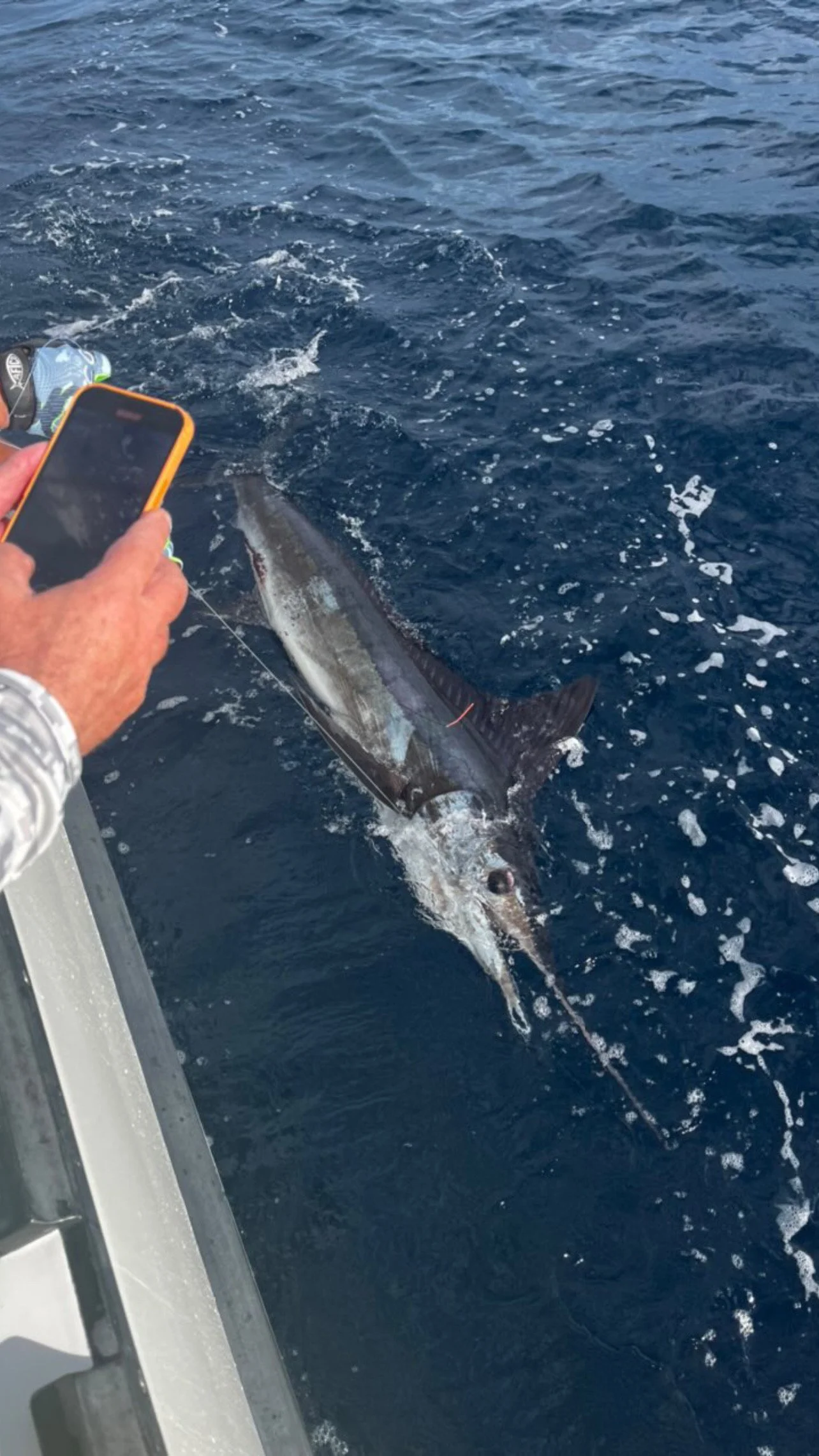Getting to Know Billfish
What are Billfish? The term billfish refers to a group of predatory fish characterized by their long bill-like rostrums. There are 11 different species of Marlin, Spearfish, Sailfish and Swordfish that are called Billfish. This two-part blog will go over a little bit about each of them so that you can get to know them a little bit better.
The first group of fish which are considered Billfish are Marlins. This category is made up of Blue Marlins, the Black Marlin, the White Marlin, and the Striped Marlin.
There are two different species which are referred to as Blue Marlin- Makaira mazara and Makaira nigricans.
The Makaira mazara, also known as the Pacific Blue Marlin or the Indo-Pacific Blue Marlin is a pelagic species that can be found as deep as 200m (656 feet). According to Fishbase, of all the species of billfish, the M. mazara is the most tropical of the species and is commonly found in equatorial waters that are 24 *C (75*F) or warmer. The Pacific Blue Marlin is known to migrate seasonally from north to south as these water temperatures change. When they are younger they can sometimes be found in small schools of 10, but as they age, they tend to be solitary. Their diet consists of crustaceans, other fish, as well as squid and other cephalopods.
The other species referred to as a Blue Marlin is the Makaira nigricans. There is some debate among researchers if the M.mazara and the M. nigricans are the same or separate species, but at the time of this article was written they are considered two distinct species. The Blue Marlin is found in waters between 22-31*C (71-87.8*F) and in depths as deep as 1000m (3280 feet) in the tropical and temperate Atlantic Ocean where there is blue water. This species tends to be solitary and are not often seen schooling. Like the Pacific Blue Marlin their diet consists of fish and cephalopods. This species is listed on the IUCN Red List as ‘vulnerable’.
The next species of Marlin on the list is the Black Marlin or Istiompax indica. This species tends to be limited to the Indo-Pacific, though individuals have been seen in the Atlantic Ocean. They prefer warmer waters above the thermocline, however they can be found as deep as 915m (3,005 feet). The I. indica can be found around nearshore habitats like coral reefs where they consume cephalopods, large crustaceans, and fishes.
White Marlin or Tetrapturus albidus is another Marlin species which is listed as ‘vulnerable’ on the IUCN Red List. Their range is primarily limited to the Atlantic Ocean, however they have been reported in the Mediterranean Sea. Unlike some of the other species, the White Marlin tend to live in shallower water, but still prefer blue water between 100 and 150 m (328-429ft). Much like the other species their diet consists of squid and fish.
The last of the Marlins is the Kajikia audax, also known as the Striped Marlin. This species has a large habitat and can be found in the Indo Pacific with dense populations along the equator. Unlike the Black Marlin and the Blue Marlin (M. mazara) the Striped Marlin prefers cooler water between 20 and 25*C (68-77*F). The spawning season is the only time they are typically seen in groups. They tend to school in small groups based on size, though outside of spawning season, they are solitary. As with all billfish, they feed on fish, crustaceans, and squid. They are currently harvested and used to make sushi, however they are listed as ‘near threatened’ by the IUCN Red list so their availability as a seafood source could be limited in the future.
Marlins make up one of the four groups of fish that are considered billfish. Make sure to check back for part 2 of this blog to learn about the other 3 types of Billfish-Spearfish, Sailfish, and Swordfish.


